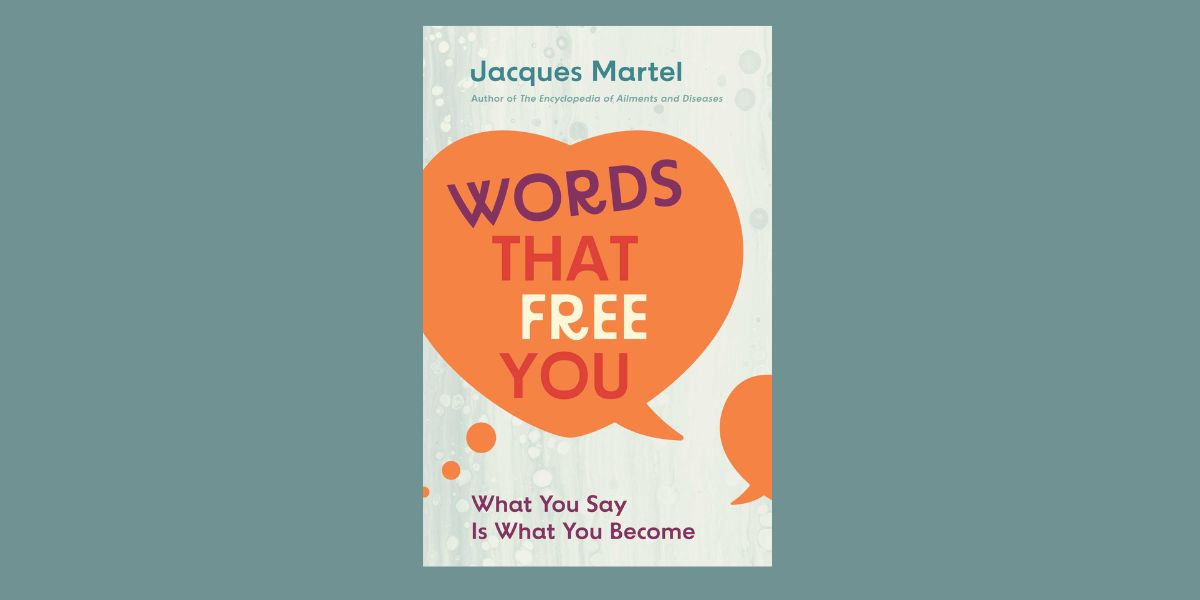
Words That Free You: What You Say Is What You Become, by Jacques Martel
Findhorn Press, 9781644119624, 128 pages, January 2024
In his life-altering book, Words That Free You: What You Say Is What You Become, Jacques Martel provides the reader with a primer to rewire your brain and connect with your heart for a more abundant life.
As a psychologist and trainer, Martel has been a leader in the personal development field for more than 35 years. In addition to his education in engineering, Martel has trained in Reiki and Reconnection Therapy. He has also created his own healing modality, which he calls ITHT (Integration Through the Heart Technique). Martel has written several other books and travels around the world teaching and lecturing. He resides in Quebec, Canada. You can learn more about him at his website.
Although this book is small, it is packed with many helpful tools and tips for living a more abundant and positive life. I have recently become more aware of the thoughts that come into my head and the words I speak. I picked up this book to see how I could make changes to both aspects. On the first page of the book, Martel shares that he often makes suggestions in his seminars regarding the words that participants use and the reasons for making such changes. After being asked several times to create a book of these tips, he decided to do so.
“The purpose of this book is to provide simple means for changing my language to gain more freedom, wisdom, and love in my life.”1
Martel discusses consciousness, how the brain works, and the power of intention in order to introduce the reader to his subject matter. He does a great job explaining the difference between the conscious brain and the subconscious brain. He advises the reader:
“It is vital to know that my brain cannot tell the difference between what is:
- Real
- Imaginary
- Virtual
- Symbolic”2
Touching on how the brain processes homonyms, Martel shares several stores about the different meanings of words that sound the same to the brain. Interestingly, he shares examples from his native French and English! Later, he discusses the “Power of using ‘I’ in positive thoughts,”3 and provides 60 examples of such thoughts.
For many of the positive thoughts, Martel inserts the ♥ symbol, which is his way of marking passages for which he recommends “moving from my head toward my heart, which then leads to a healing in love or to the reinforcement of a positive attitude.”4 He has sprinkled the heart symbol throughout the book.
Words That Free Youis very well structured. It includes a complete contents section that allows you to go back to chapters for further review. Each right-hand page is marked with the chapter title at the top of the page, which is very helpful, as well. There are also many tables and lists, which are so helpful for pulling out the important content. Martel also includes a conclusion section, where he wraps up the book and refers to how others have used the information from his seminars through the years. Then he adds a list of books for further reading and includes books in both English and his native French.
My favorite chapter in the book is the one entitled “The Power of Saying ‘I Know’ Instead of ‘I Think’ or ‘I Believe.’” Martel provides realistic examples of how this works in life and how he addresses naysayers in his seminars:
“We clearly understand that ‘I know’ doesn’t mean that in our physical reality ‘I know’ 100 percent of everything I say and do, but in so doing I open myself to the likelihood that this will show up more quickly in my physical consciousness, and I thus become more aware of my connection to the Soul that I am, who does KNOW EVERYTHING.”5
He also includes testimonials from students and apprentices who have used this tip and how it has changed their lives.
I especially enjoyed the Table of Negative and Positive Expressions. Martel begins with a comprehensive list of phrases that are negative or pessimistic. In his words, these are: “Negatively slanted sentences or common expressions that manifest the dark side.”6 Examples are: “It’s a pain” or “It’s terrible.”7
Next, he has a list of phrases or sentences that “bring in the light.”8 Here, he shares uplifting replacements such as “Life is great” and “It’s brilliant.”9 I’d like to point out that he has four pages of negative expressions and six pages of positive ones! He also has a chapter on the importance of mantras and another on the benefits of chanting.
I really enjoyed Words That Free You. Its small size hides its brilliance and the truth and wisdom that Martel shares. I will enjoy using the various tips, tools, and tables as I work to change my thoughts and words to create a better life for myself.
Anyone who is interested in consciousness and becoming more aware of the impact of words and thoughts will benefit from this book. It is written in a conversational style that is easy to comprehend. The various testimonials that Martel shares show how impactful his seminars are and are a testament to his legacy as a thought leader.

PJ Spur is an author, intuitive, spiritual mentor, astrologer, and hypnotist. She does tarot & oracle card readings, natal chart readings, grief coaching, and relationship healing. She also has hosted a weekly “Coffee & Cards” event with her Soul Compass Community for the past four years. Her book Navigating Grief with Grace is available on Amazon. Learn more at www.dearpj.com

